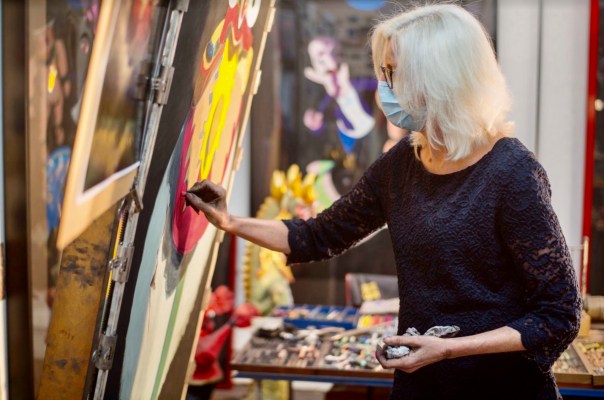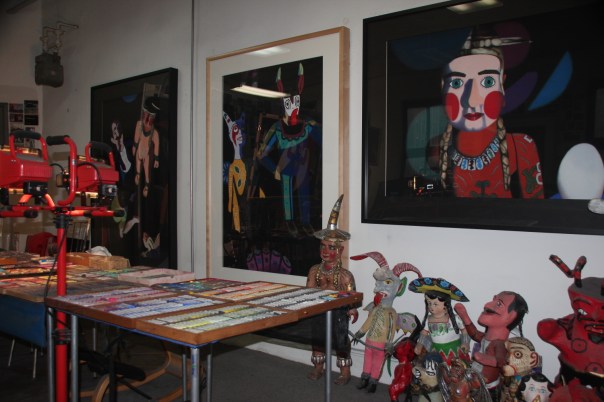Blog Archives
Q: How many days a week do you work on your art?
Posted by barbararachkoscoloreddust
A: My life is devoted to art and to art-making. Working in pastel is slow and labor-intensive – in a good year I make four or five pastel paintings – so maintaining good work habits is imperative. As a fulltime professional artist, I strive to keep regular studio hours. I work five days a week, roughly seven hours a day.
However, running the business side of things is an every day activity: marketing, interviews, applying for exhibitions, making photographs, documenting my professional activities, sending JPEGs, responding to inquiries, etc. There is always something to do!
Comments are welcome!
Posted in 2020, An Artist's Life, Art Business, Pastel Painting, Studio, Working methods
Comments Off on Q: How many days a week do you work on your art?
Tags: activities, activity, applying, art-making, artist, “Jokester”, business, devoted, documenting, every day, Exhibitions, fulltime, imperative, inquiries, interviews, maintaining, making, marketing, pastel paintings, photographs, professional, regular, responding, roughly, running, sending, something, Studio, working
Q: How do you start your day?
Posted by barbararachkoscoloreddust
A: (Note: this is my pre-pandemic answer).
I have always been a morning person. I wake up about 6:00, make breakfast, and spend about an hour online checking email, monitoring and responding to social media (my two assistants devote their efforts to social media marketing of my work), catching up on news (art sites like Hyperallergic, The New York Times, the BBC, etc.). I swim three or four times a week. On those days I leave my apartment by 7:30, walk to the pool, swim for an hour, and arrive at the studio about 11. On days when I don’t swim, I generally arrive at the studio between 9:30 and 10.
Comments are welcome!
Posted in 2020, An Artist's Life, Art Business, Studio
Comments Off on Q: How do you start your day?
Tags: "The New York Times", answer, apartment, arrive, assistants, BBC, breakfast, catching up, checking, devote, efforts, Hyperallergic, marketing, monitoring, morning person, online, pre-pandemic, responding, social media, Studio, working
Q: What invaluable art business lesson did you learn in the past year?
Posted by barbararachkoscoloreddust
A: I have decided that it IS necessary to work with art galleries. During my thirty years as an artist, I have been represented by two dozen galleries and found most to be disappointing. For the past few years I have focused extensively on social media and other sorts of creative marketing. My efforts have built significant name recognition – many more people around the world know about me and my work – but my collector base has not expanded as much as I would have liked. So I have revised my marketing strategy to include gallery representation.
Comments are welcome!
Posted in 2016, An Artist's Life, Studio
Comments Off on Q: What invaluable art business lesson did you learn in the past year?
Tags: business, collector base, galleries, gallery representation, lesson, marketing, name recognition, social media, strategy
Q: How do you decide how much to charge for your paintings?
Posted by barbararachkoscoloreddust
A: What to charge for my work is a complex question. The prices of my pastel paintings take into account many tangible and intangible factors. Here are a few:
Sales history.
My thirty-year-long exhibition history.
The costs of maintaining a studio in New York. My overhead goes up annually, but I do not raise prices every year to offset these expenses.
The countless hours of labor, cost of art materials, framing, photography, transportation, foreign travel, etc. that go into creating a painting.
Costs for marketing, social media, advertising, website design and upkeep, ongoing education, etc.
Somewhat less quantifiable factors such as my reputation as an artist, the real demand for my work, goodwill, the fact that I work full-time as a professional artist, etc.
Comments are welcome!
Posted in 2015, An Artist's Life, Art Works in Progress, Black Paintings, Creative Process, Pastel Painting, Photography, Studio, Working methods
Tags: account, annually, art, artist, charge, complex, cost, countless, creating, decide, demand, design, education, exhibition, expenses, factors, foreign, framing, full-time, goodwill, history, hours, intangible, labor, maintaining, marketing, materials, New York, offset, ongoing, overhead, paintings, pastel, photography, prices, professional, quantifiable, question, raise, real, reputation, sales, social media, Studio, tangible, transportation, travel, upkeep, website, year
Q: Would you speak about the practical realities – time and expenses – involved in making your pastel-on-sandpaper paintings? What might people be surprised to learn about this aspect of art-making?
Posted by barbararachkoscoloreddust
A: I have often said that this work is labor-intensive. In a good year I can complete five or six large (38″ x 58″) pastel paintings. In 2013 I am on track to make four, or, on average, one completed painting every three months. I try to spend between thirty-five and forty hours a week in the studio. Of course, I don’t work continuously all day long. I work for awhile, step back, look, make changes and additions, think, make more changes, step back, etc. Still, hundreds of hours go into making each piece in the “Black Paintings” series, if we count only the actual execution. There is also much thinking and preparation – there is no way to measure this – that happen before I ever get to stand before an empty piece of sandpaper and begin.
As far as current expenses, they are upwards of $12,000 per painting. Here is a partial breakdown:
$4500 New York studio, rent and utilities ($1350/month) for three months
$2500 Supplies, including frames (between $1500 – $1700), photographs, pastels (pro-rated), paper
$2000 Foreign travel to find the cultural objects, masks, etc. depicted in my work (approximate, pro-rated)
$3000 Business expenses, such as computer-related expenses, website, marketing, advertising, etc.
This list leaves out many items, most notably compensation for my time, shipping and exhibition expenses, costs of training (i.e. ongoing photography classes), photography equipment, etc. Given my overhead, the paintings are always priced at the bare minimum that will allow me to continue making art.
I wonder: ARE people surprised by these numbers? Anyone who has ever tried it knows that art is a tough road. Long ago I stopped thinking about the cost and began doing whatever is necessary to make the best paintings. The quality of the work and my evolution as an artist are paramount now. This is my life’s work, after all.
Comments are welcome!
Posted in 2013, An Artist's Life, Art Works in Progress, New York, NY, Pastel Painting, Photography, Studio, Travel, Working methods
Tags: addition, advertising, allow, art-making, artist, aspect, awhile, back, bare minimum, begin, best, Black Paintings, breakdown, business, change, compensation, complete, computer, continuing, cost, cultural objects, current, day, depict, empty, entire, equipment, evolution, execution, exhibition, expense, foreign travel, frames, happen, hours, include, involved, item, labor intensive, learn, life's work, list, look, make, making art, marketing, matter, matters, measure, money, month, need, New York, notably, number, on track, painting, paramount, partial, pastel paintings, pastel-on-sandpaper painting, photograph, photography, possible, practical, preparation, priced, prior, progress, quality, reality, rent, routine, said, sandpaper, series, shipping, spend, stand, Studio, supplies, surprised, think, thinking, time, training, upwards, utilities, website, week, work, year





